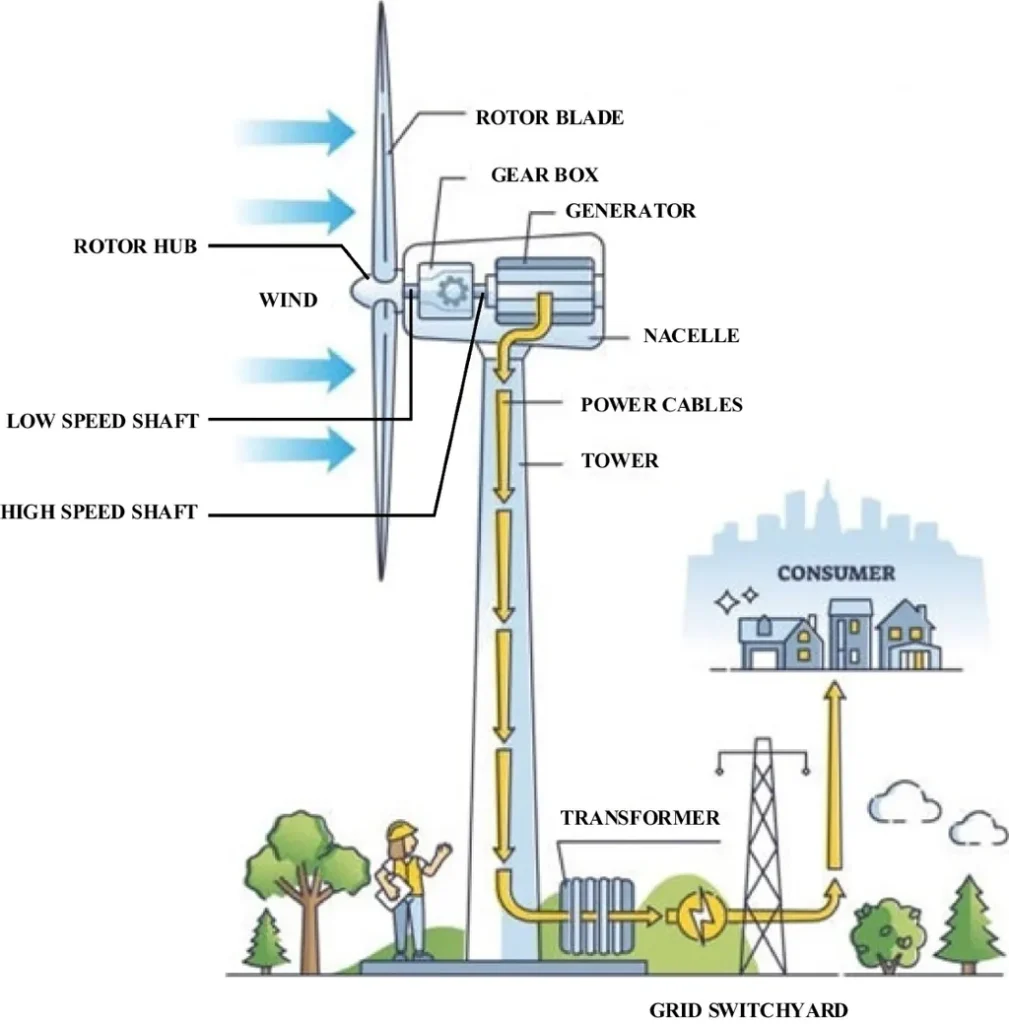In the rapidly evolving landscape of renewable energy, wind power has emerged as a cornerstone of the global transition from conventional energy sources. However, the integration of large-scale wind power plants (WPPs) into existing power systems presents a unique set of challenges, particularly in terms of dynamic performance and power quality. A recent review article published in the *IEEE Open Journal of Industrial Electronics* (formerly known as the IEEE Open Journal of Power Electronics) delves into these issues, offering insights into the current state of research and potential solutions.
Led by Mohib Ullah from the Center for Research on Microgrids (CROM) at Aalborg University in Denmark, the article examines the technical hurdles associated with large-scale wind power integration. “The development of wind power plants has significantly contributed to the demand for clean and affordable energy,” Ullah explains. “However, their integration into power systems introduces challenges related to control, protection, and adherence to power quality standards, which have direct technical and economic impacts on both consumers and suppliers.”
The review article explores various topologies of wind energy conversion systems (WECSs) and their control strategies, providing a comprehensive analysis of power quality and dynamic response issues. One of the key focuses of the study is the evolving grid code requirements for grid-connected WPPs in leading countries such as Denmark, the U.K., Australia, Germany, and the USA. By comparing these requirements, the article sheds light on the global regulatory landscape and its implications for the energy sector.
Ullah and his team also investigate the improvement approaches proposed in the literature, classifying them on different bases and discussing their pros and cons. “Different ancillary devices and control approaches have been adopted to comply with the established grid code,” Ullah notes. “This article aims to review the state-of-the-art research and progress, while considering the main challenges related to dynamic performance and power quality enhancement of emerging grid-forming wind power plants.”
The findings of this review have significant commercial implications for the energy sector. As the global push for renewable energy continues to gain momentum, understanding and addressing the challenges of large-scale wind power integration will be crucial for ensuring the stability and efficiency of power systems. The article’s analysis of evolving grid codes and proposed solutions offers valuable insights for industry stakeholders, helping them navigate the complexities of wind power integration and make informed decisions.
Looking ahead, the research highlights the need for continued innovation and collaboration in the field. “A brief discussion on the solutions and future directions is presented,” Ullah mentions, emphasizing the importance of ongoing efforts to improve the dynamic performance and power quality of wind power plants. As the energy sector continues to evolve, the insights provided by this review will undoubtedly shape future developments and contribute to the advancement of renewable energy technologies.
In a rapidly changing energy landscape, the work of Mohib Ullah and his team serves as a timely reminder of the challenges and opportunities that lie ahead. By addressing the technical hurdles of wind power integration, the energy sector can move closer to a sustainable and efficient future, powered by clean and affordable renewable energy.

